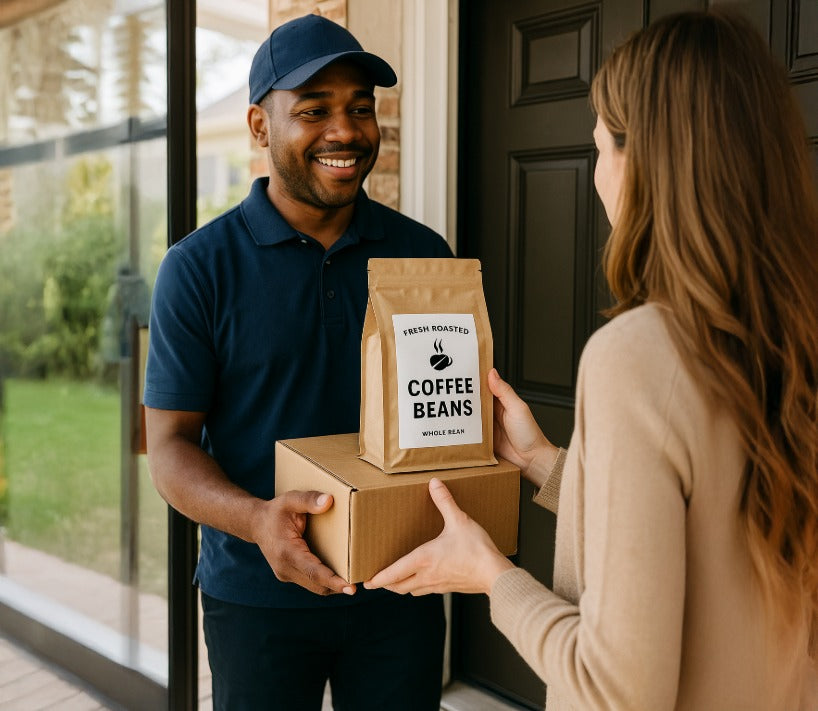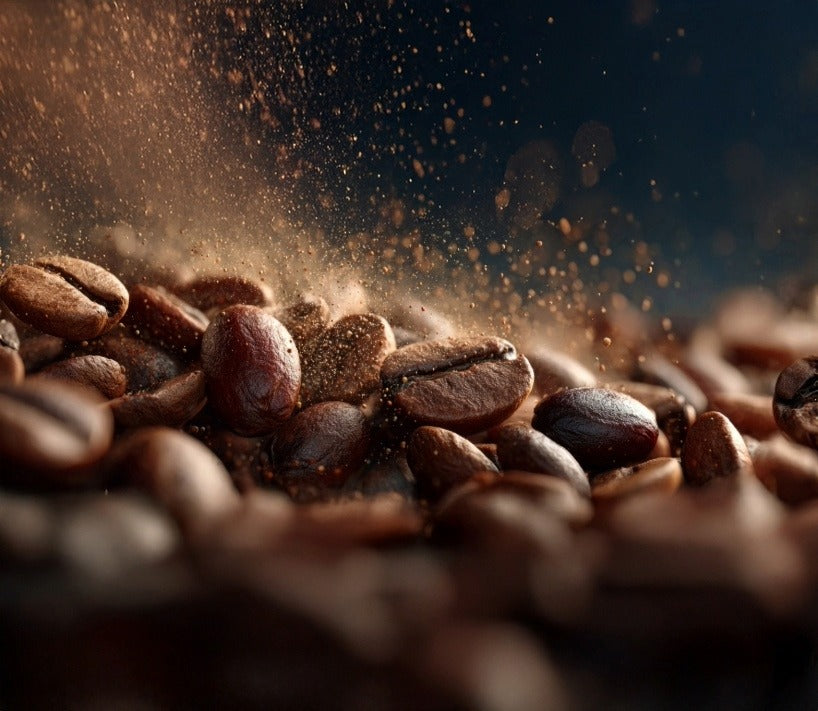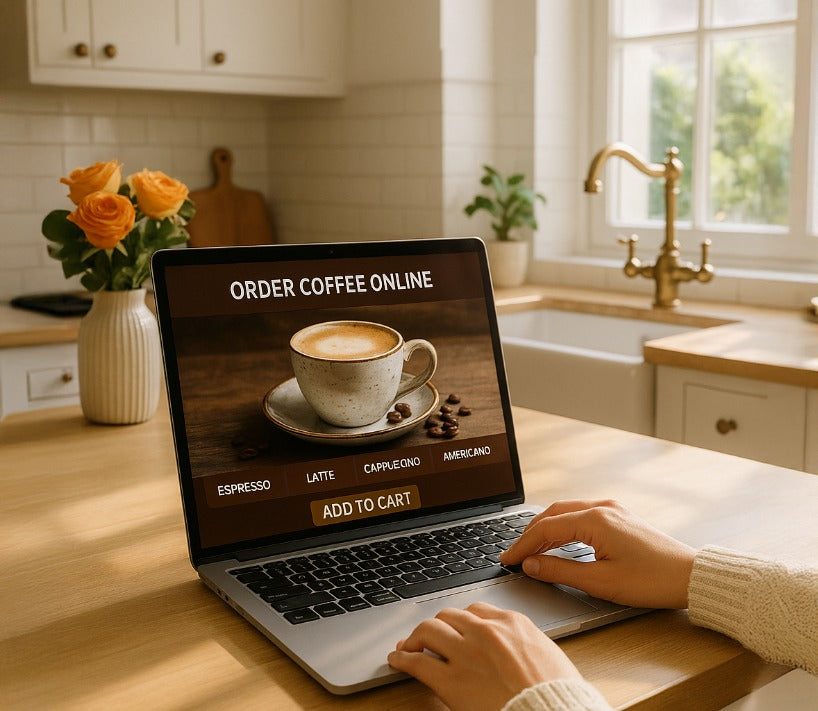From Bean to Bond: How True Specialty Coffee Builds Community
May 21, 2025 5 min read
From Bean to Bond: How True Specialty Coffee Builds Community (and Outs the “Premium” Pretenders)
Pull up a chair, I’ve got beans to spill…
There’s something magical about a café table. Two strangers sit down, a barista hands over cups, and suddenly they’re debating travel tips, football scores, or why their cat definitely understands English. Coffee culture glues us together—whether we grab the best craft coffee at home or meet friends for an afternoon espresso. But here’s the plot twist hardly anyone sees coming: most brews parading around as “premium” or “specialty” are as ordinary as socks at a sandal convention. The real, high-scoring stuff? It makes supermarket blends taste like cardboard confetti. Keep reading and I’ll show you why genuine specialty coffee is a social superpower—plus how to sniff out impostors before they mug your mug.
Let’s roast this topic, one myth at a time.
1. Coffee: Humanity’s Favorite Icebreaker
Walk into any city on Earth and ask, “Where can I find coffee?” You’ll get directions faster than if you yelled “Free Wi-Fi!” From Istanbul’s centuries-old coffeehouses to Tokyo’s minimalist brew bars, cafés have always doubled as community hubs. I’ve laughed with retirees in Rome over tiny cups, swapped playlists with students in Chicago, and practiced disastrous French ordering a café noisette in Paris. Coffee culture welcomes all walks of life—no membership card required, just curiosity and a caffeine hankering.
2. The Specialty Coffee Definition Nobody Told You
Most people think specialty equals fancy label plus lofty price. Not so. True specialty coffee follows a strict grading rubric from the Specialty Coffee Association. Beans scoring 80–84.99 points are entry-level specialty; 85+ points jump into excellent territory. Trained “Q-graders” assess aroma, sweetness, balance—you name it—much like sommeliers judge wine. That two-pound bag stamped “Premium Roast” but lacking a score is usually “pretty good” at best. And if the roast date’s older than your last dental appointment, forget best tasting whole bean coffee—it’s bean jerky.
3. Why Score Matters for Flavor—and Friendship
High-scoring beans burst with complexity: think blackberry jam meeting milk-chocolate velvet, all gliding across your palate. Share a Chemex of 88-point Ethiopia with friends, and watch conversation bloom. Suddenly everyone’s comparing tasting notes instead of doom-scrolling. Great coffee ignites curiosity (“How do they coax peach out of beans?”) and camaraderie (“Let’s split a bag next time!”). Even so-called best coffee for non coffee drinkers becomes approachable when sweetness and clarity replace bitterness.
4. Imposters in Fancy Packaging
Marketing loves vague terms—“select,” “gourmet,” “reserve.” None guarantee quality. I once bought a “Grand Master’s Blend” on vacation. The bag claimed “hand-picked excellence,” but the beans were darker than a moonless night and smelled like toasted tires. The lesson? Ignore buzzwords. Hunt for transparent info: origin, farm, processing method, roast date, and—if available—an SCA score. Without those, you might as well tape a dollar to your kettle and steam-clean your wallet.
5. Why Freshness Is Half the Battle
Even elite beans wilt with time. Aromatic compounds degrade fast, especially once the bag’s opened. That’s why I ask myself “Where can I buy fresh coffee beans near me?” whenever local roasters pop up. No shop nearby? Top coffee delivered within days of roasting keeps flavors vivid. The difference between a ten-day-old roast and a ten-week-old roast is night and day (or rather, fruit and cardboard). If you buy specialty coffee online, check that the roaster ships within 24 hours of roasting. Otherwise your best espresso beans will be past their prime before they hit the portafilter.
6. The Journey of a High-Scoring Bean
Let’s geek out for a second:
| Stage | What Happens | Why It Builds Community |
|---|---|---|
| Farm | Careful varietal selection, shade management, meticulous picking at peak ripeness | Farmers earn higher wages; consumers learn about origin stories that spark empathy |
| Processing | Washed, honey, natural—each method shapes flavor | You get a talking point for dinner parties (“This natural Brazil tastes like strawberry jam!”) |
| Export & Import | Small lots tracked and stored with precision | Transparency fosters trust across continents |
| Roasting | Light-to-medium profiles highlight terroir; roast date printed boldly | Home brewers swap tips on dialing in grinders and brewers |
| Brewing | Proper ratios, clean water, correct temps | Friends gather for “brew-offs,” taste flights, and endless nerdy fun |
When every link in the chain values excellence, coffee transforms from daily fuel into cultural diplomacy.
7. Busting “Premium” Myths Rapid-Fire
-
Myth: Darker roast = stronger caffeine.
Truth: Caffeine mass barely changes; darker tastes bolder but often masks defects. -
Myth: Espresso beans are a different species.
Truth: Nope—espresso roast is just a profile aimed at pressure brewing. Any high-quality bean can shine in espresso if roasted and dialed correctly. -
Myth: Pre-ground is fine if sealed tight.
Truth: Oxidation never sleeps. Grind right before brewing or sacrifice up to 70 % of aromatics within minutes. That’s like uncorking wine yesterday and serving it today with a shrug.
8. How to Host a “Real Specialty” Tasting (No Fancy Gear Required)
-
Source three beans—aim for different origins and processes. Use any site offering best craft coffee online with clear roast dates.
-
Grind and brew each using the same ratio (e.g., 18 g coffee : 300 g water).
-
Slurp loudly. Yes, slurping aerates flavor across your palate—this is coffee nerd etiquette, not bad manners.
-
Compare notes. Look for sweetness, acidity, mouthfeel. Even novices pick out differences like citrus vs. cocoa.
-
Share leftovers. Spare 50 g into sample bags—instant presents for coffee lovers. They’ll brag about you for weeks.
9. Introducing Specialty Coffee to Skeptics
Got a friend who downs diner sludge and says, “Whatever wakes me up”? Start them with balanced, sweet options: a Brazil natural or Colombia washed. Highlight that it’s a good coffee to drink black—no sugar safety net needed. When they notice how smooth it is, they’ll ask you for the brand. Boom: another recruit to the global coffee club.
Sip smarter, connect deeper.
By now you know the secret handshake of true specialty coffee:
-
Score trumps adjectives. Demand evidence (85 + points, transparent sourcing) instead of marketing fluff.
-
Freshness equals flavor. Whether you snag the best small batch coffee from your neighborhood roaster or opt for best coffee online with speedy shipping, days-old beans beat months-old every time.
-
Coffee is conversation. A high-scoring cup sparks stories about farmers, fermentation, and brewing hacks that bridge age, culture, and language.
So the next time you’re browsing bags labeled “premium” or “gourmet,” channel your inner detective. Check the roast date, trace the score, and imagine the faces behind the beans—from growers in Ethiopia to roasters in your zip code. Then invite friends over, fire up the kettle, and turn an ordinary morning into a mini world tour. Because in the end, coffee’s greatest gift isn’t just caffeine—it’s connection.
Now go forth and brew bonds, one fresh cup at a time.
Also in Best Coffee To Buy Online Education

Best Fresh Roasted Coffee Delivery Online
November 28, 2025 4 min read
I roast the best tasting coffee at home for you! I use 100% electric equipment, so no hydrocarbons here. Best fresh roasted coffee delivery starts with high-scoring specialty coffee online.

Which Roaster Makes Better Coffee: Gas or Electric?
November 27, 2025 4 min read
Why electric drum roasters produce cleaner, sweeter, more consistent coffee—especially the kind you want when buying fresh roasted coffee beans online or trying to make the best tasting craft coffee at home.

Biggest Coffee Buying Mistake at Home
November 26, 2025 4 min read
Learn why the roast date matters and how to buy fresh, high-quality specialty coffee online. No guesswork when you order coffee online with me. I only stock, roast, and process the best tasting craft coffee at home. I am YOUR personal roaster.
